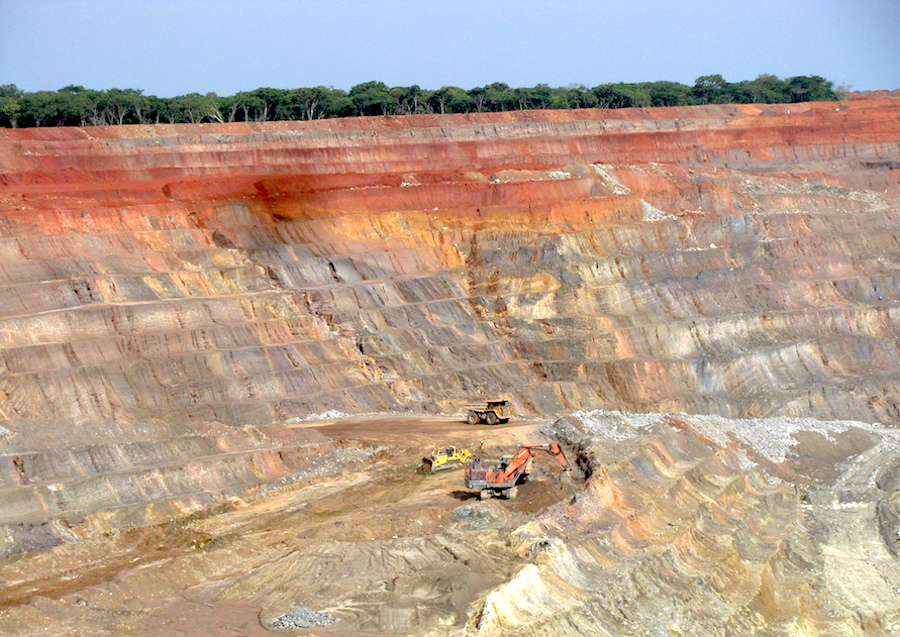
In a previous article on First Quantum Minerals’ Trident Project in Zambia, we focused on the impact in terms of sustainability that it would have in the country - in terms of bringing quality employment, introducing several CSR projects, dramatically improving the regional infrastructure and all while respecting the natural environment in the area.
The Trident Project, at around US$2.1 billion may well be the largest project that we’ve ever covered within these pages. Investments of this scale make a mark in any country, but in an emerging economy of Zambia’s size, it has the potential to be truly transformative. On this basis, we decided to take another look at how the project is progressing.
Extracting while giving back
First Quantum Minerals’ 2010 decision to acquire the greenfield Trident Project was at least in part driven by the success of the firm at their existing mining project in Zambia: Kansanshi, Africa’s largest copper mine. There’s every sign that FQM has also taken many of the lessons learned from Kansanshi and instilled them at the Trident Project.
Prime among these, are the fact that First Quantum Minerals has undertaken a health assessment in the area around the Trident Project, and regularly consults with the District Health Management Team before building health facilities to ensure their investments fits with the district’s health action plan - becoming a company standard across FQM.
Direct employment on the project is also on a significant upturn in line with production. While this began with less than 50 living in ad hoc constructions, it now numbers several hundred, with many of those living on-site. When finished, it will include close to 1,000 homes on-site, bringing a newly-planned, fully functional town to Zambia’s so-called copper belt.
In 2018, FQM also announced that it had invested over US$2 million to date into wildlife and conservation initiatives located around the Trident Project. These initiatives were conducted under the watchful eye of the Trident Foundation, which was established by QFM with the aim of tackling climate change in Zambia.
A catalyst for local business
The impact of First Quantum Minerals is also being felt in the business community, where it has steadily built on its activity since we last reported. In February 2018, it partnered with the Musele Chamber of Commerce in the North-Western Province of Zambia to launch a new website which will publicize opportunities for local businesses.
The website will show tenders posted by First Quantum Minerals’ local subsidiary, Kalumbila Minerals Limited, and encourages local businesses to participate. The idea is that by bringing local firms on board, FQM can help Zambia diversify its economy by creating demand along the local supply chain.
Among the local businesses to benefit from the initiative will be farmers, who can connect with service providers like on-site caterers at the Sentinel Mine. Between 2011 and 2016, the mine procured over US$2 billion of goods and services in Zambia, of which US$480 million was spent in North-Western Province, and as the mine grows, so too will these figures.
A growing network of business in Zambia
The presence of First Quantum in Zambia is mirrored by other large international firms such as French energy giant TOTAL, Indian conglomerate TATA, BIA overseas S.A, Atlas Copco and the African Development Bank of Zambia. The ongoing success of these firms will inevitably draw more in, creating new opportunities on the ground.
In the case of First Quantum, the opportunities generated by its presence are being seen everywhere. It has developed partnerships with local firms such as Quattro Co. for logistics, Transco for waste management, Saro Agro for equipment, Mei Mei for construction materials and even smaller firms such as BEIER Safety footwear and Challenge Stationers. This is only to mention the direct first-degree links with the project.
Financial and Operational Progress
First Quantum Minerals released its first quarter results at the end of April 2018, and there was highly positive news for the firm’s, with copper prices up approximately 25% over the past 18 months, after a few years in which copper prices fell below historical levels. This also allowed it to put in place a 5-year US$400 million facility for the Sentinel mine, which can begin repayments in December 2019.
This wasn’t the only piece of positive news emanating from the Sentinel Mine; it had a 39% increase year-on-year in production. There was also positive news from the Enterprise deposit just a few miles away where the latest mineral resource inventory confirms the initial audit in 2015 and will provide an extra source of revenue when nickel prices pick up.
All good on the North-Western front
In short, in the time since we first profiled First Quantum Minerals, there has been steady progress on the Trident Project. While nickel prices haven’t yet reached the necessary levels to warrant opening the Enterprise Mine - although that day is coming - copper prices continue to rise, making the Sentinel Mine a genuine success story.
As planned, there have been significant projects implemented in education, health and the environment - with the Trident Foundation already making considerable inroads in Zambia, both with its own employees and the wider community. In short, just two years into the Trident Project, and it’s already exciting to imagine the difference over the coming 18 years.
Researched by Joseph Philips
DOWNLOAD
 FirstQuantum-AF-July18.pdf
FirstQuantum-AF-July18.pdf













